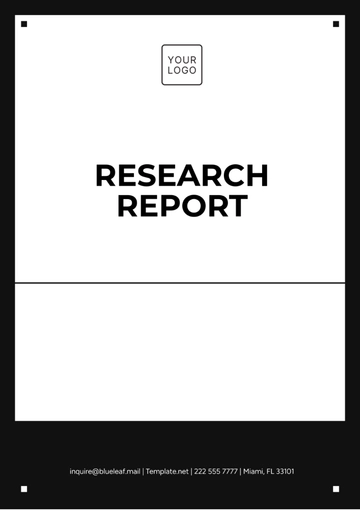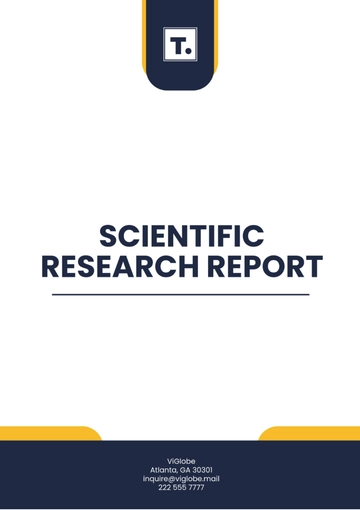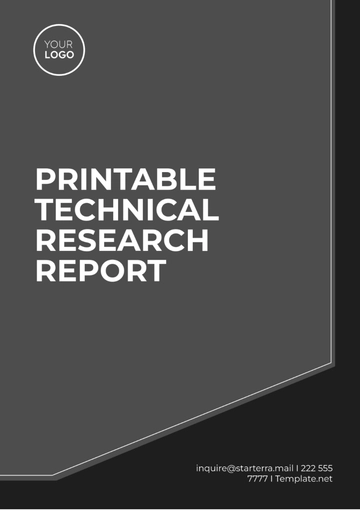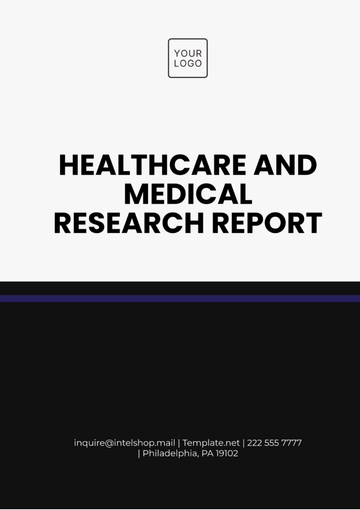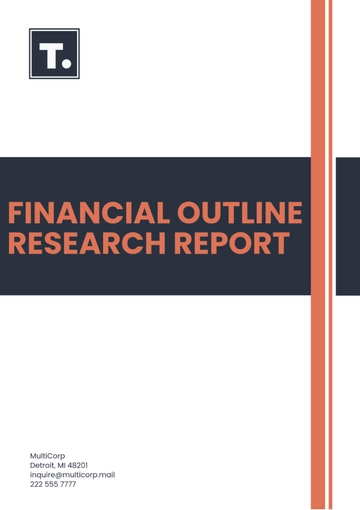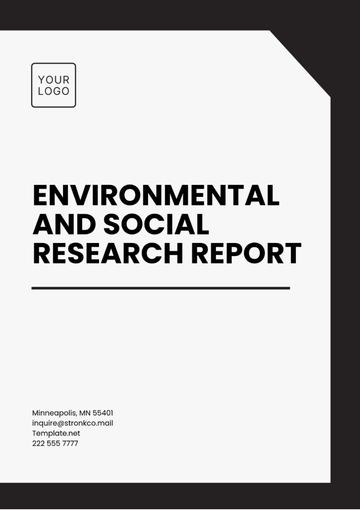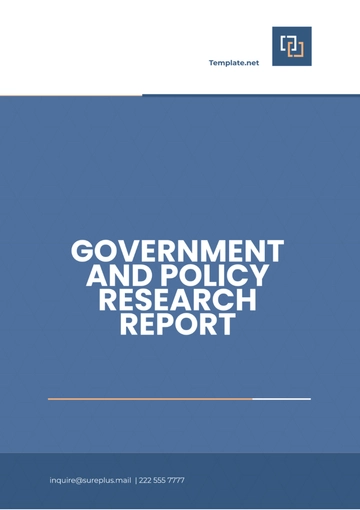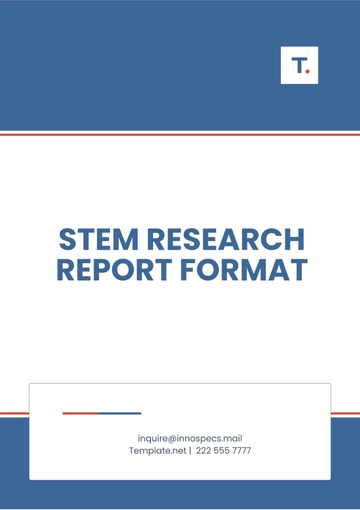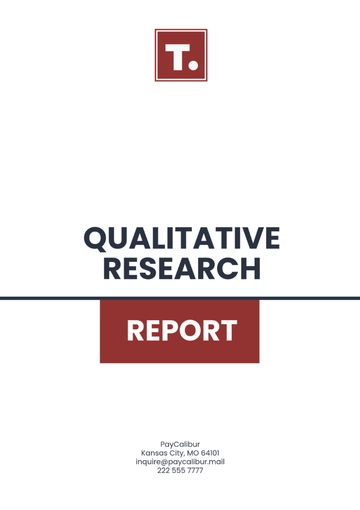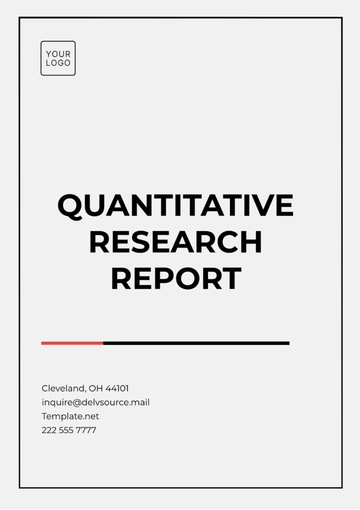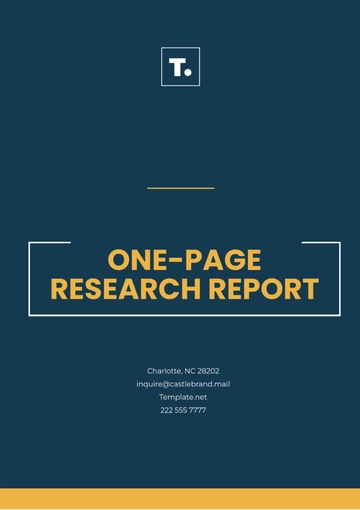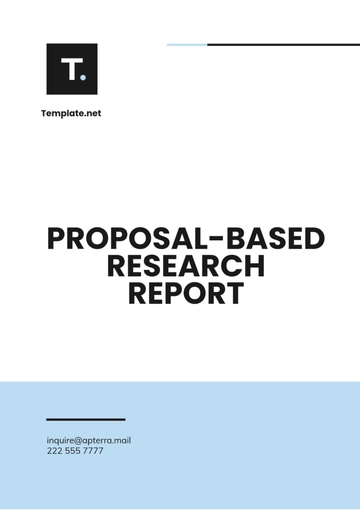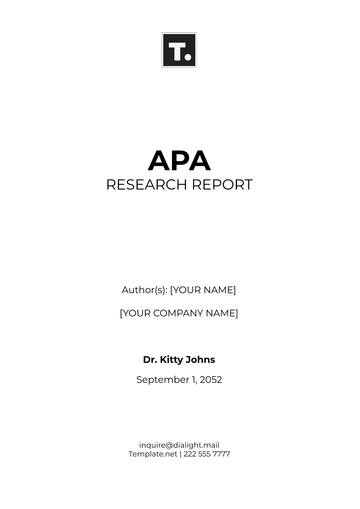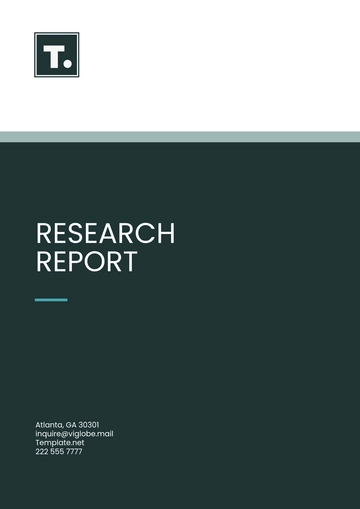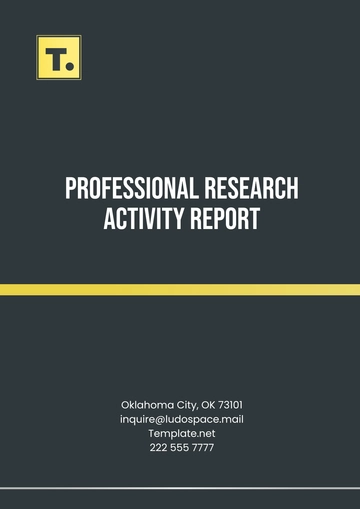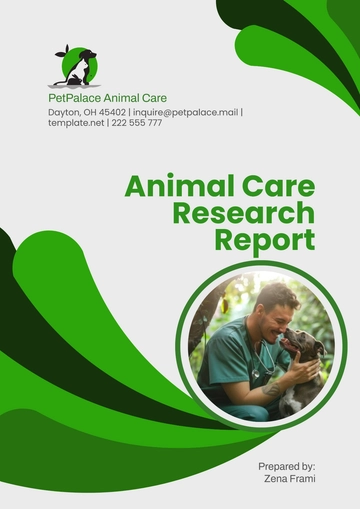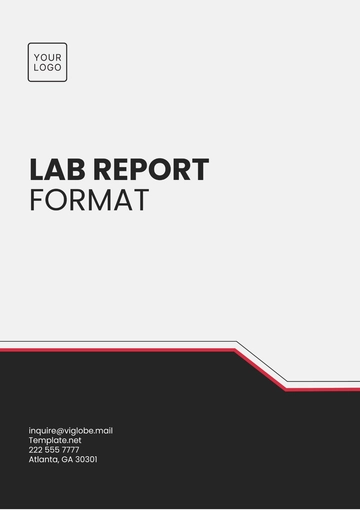Free Workplace Incident Research Report
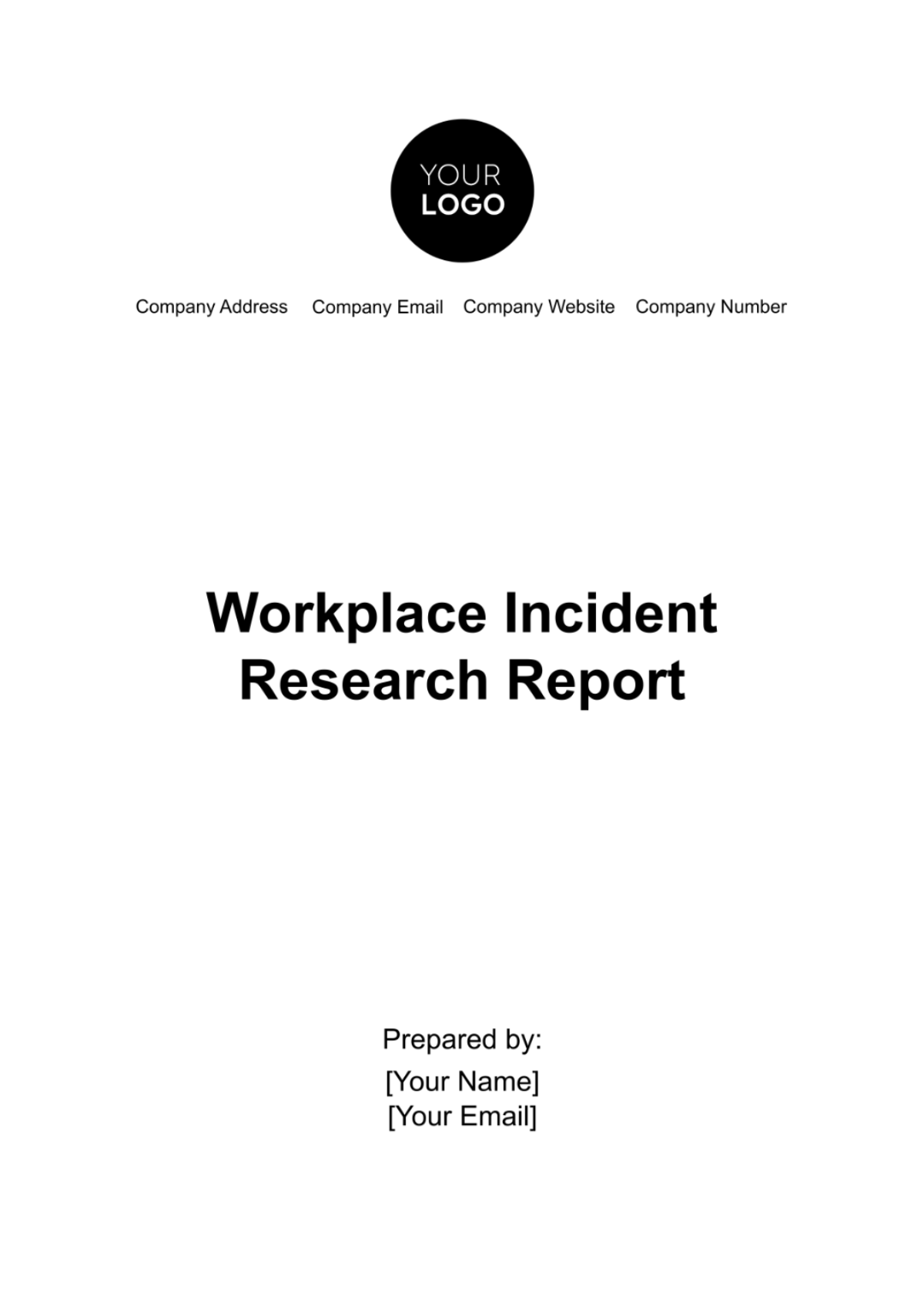
I. Executive Summary
This Workplace Incident Research Report provides a comprehensive analysis of the incident that occurred on [Date] at [Location]. The incident involved [Brief Description], resulting in [Injuries/Damages]. This report presents key findings, a root cause analysis, and recommendations to enhance workplace safety and prevent similar incidents in the future.
II. Incident Overview
A. Date, Time, and Location
The incident occurred on [Date] at approximately [Time] in the [Department/Work Area] at [Detailed Location]. It was during [Describe the specific task or activity being performed].
B. Description of the Incident
At the time of the incident, Employee 1 was operating [Equipment/Tool], following the standard operating procedures outlined in the [Relevant Procedure Manual]. Employee 2 was assisting in [Task/Activity]. Unexpectedly, [Describe the event or chain of events that led to the incident].
In the moments leading up to the incident, [Highlight any unusual observations, if applicable]. The incident resulted in [Immediate Consequences], causing disruptions to [Work Process/Production].
C. Involved Personnel
The following individuals were directly involved in the incident:
Employee 1 (Operator): Responsible for [Describe Employee 1's role].
Employee 2 (Assistant): Assisting with [Describe Employee 2's role].
Supervisor on Duty: [Supervisor's Name and Role].
Other Witnesses: [List other individuals present and their roles].
III. Witness Statements
Statements were obtained from [Number] witnesses, including:
1. [Employee 1]:
a. [Summary of Employee 1's statement, emphasizing their perspective on the incident].
2. [Employee 2]:
a. [Summary of Employee 2's statement, focusing on their observations and actions].
3. [Supervisor on Duty]:
a. [Summary of the supervisor's statement, detailing their response and any relevant information].
IV. Injury and Damage Assessment
A. Injuries Sustained
[Employee 1] sustained [Type of Injuries], including [Specific Injuries]. They were promptly attended to by [On-site Medical Personnel/First Aid], and subsequently transported to [Hospital] for further evaluation.
[Employee 2] reported [Any Injuries or Health Concerns], and [Describe the actions taken, if any].
B. Damage Assessment
The incident resulted in damage to [Equipment/Property]. The estimated cost of repairs is $[0]. Photographs of the damaged equipment are provided in Appendix A [or refer to the specific section].
Medical reports, detailing the extent of injuries, are included in Appendix B [or refer to the specific section].
V. Root Cause Analysis
A. Immediate Causes
The incident was primarily caused by [Immediate Cause 1], which led to [Immediate Cause 2], resulting in [Outcome]. For instance, [Describe the specific actions or failures that directly contributed to the incident].
B. Contributing Factors
Several contributing factors were identified, including:
1. Lack of Adequate Training:
[Employee 1] and [Employee] 2 had not received refresher training on [Specific Task/Equipment Operation] within the last [Time Period].
2. Equipment Maintenance Issues:
The incident revealed deficiencies in the maintenance of [Equipment], including [Specify Issues].
3. Communication Breakdown:
Inadequate communication protocols were observed between [Relevant Parties] during [Describe the critical communication points].
C. Human Factors
Human factors, such as [Human Factor 1] and [Human Factor 2], played a significant role in the incident. For example, [Explain how human actions or decisions contributed to the outcome].
VI. Analysis of Safety Systems
A. Evaluation of Safety Policies and Procedures
The current safety policies and procedures were subjected to a thorough evaluation to ascertain their effectiveness in preventing incidents of this nature. The review highlighted commendable aspects such as [Positive Aspects], but it also identified areas where improvements are warranted. Recommendations for refining and augmenting existing policies include [Specific Recommendations].
B. Effectiveness of Safety Training Programs
An in-depth analysis of safety training programs revealed both strengths and opportunities for enhancement. While existing training initiatives cover [Covered Topics], the incident emphasized the need for heightened emphasis on [Emphasized Topics]. Proposed modifications include [Training Program Enhancements] to ensure that employees are adequately equipped to handle similar tasks safely.
C. Adequacy of Safety Equipment and Controls
The examination of safety equipment and controls exposed certain inadequacies. Specifically, [Equipment/Control Issues] were identified, contributing to the incident. Recommendations encompass both immediate corrective actions, such as [Immediate Equipment Improvements], and long-term measures, including [Long-term Control Enhancements]. These adjustments aim to fortify the workplace against potential hazards.
VII. Recommendations
A. Specific Actions
1. Implementation of Real-time Monitoring Systems:
Deploying advanced monitoring systems for [Relevant Processes/Equipment] to promptly identify deviations and mitigate risks.
2. Enhanced Training Protocols:
Developing and implementing a comprehensive training program focusing on [Specific Training Areas], with periodic refresher courses.
3. Regular Equipment Audits:
Instituting a routine audit schedule for [Equipment], ensuring regular maintenance and prompt identification of potential issues.
B. Changes to Policies and Procedures
1. Clearer Communication Protocols:
Establishing clear communication protocols during [Specific Work Activities] to minimize misunderstandings and enhance coordination.
2. Updated Emergency Response Procedures:
Updating emergency response procedures to address potential scenarios similar to the incident, with a focus on [Emergency Response Improvements].
C. Training Programs or Retraining Initiatives
1. Scenario-based Training Exercises
Introducing scenario-based training exercises simulating potential incidents to enhance employees' ability to respond effectively.
2. Cross-functional Training Sessions
Conducting cross-functional training sessions to foster better understanding and collaboration among different departments involved in [Specific Processes].
VII. Corrective Actions
A. Immediate Actions Taken
1. Temporary Equipment Suspension
Temporarily suspending the use of [Specific Equipment] until a comprehensive safety inspection is conducted.
2. Medical Follow-up for Employees
Ensuring continued medical follow-up for both Employee 1 and Employee 2 to monitor and address any lingering health concerns.
B. Long-term Corrective Measures
1. Equipment Overhaul and Upgrades
Initiating a comprehensive overhaul of [Equipment] with necessary upgrades to meet current safety standards.
2. Enhanced Supervision Protocols
Implementing stricter supervision protocols during [Specific Work Activities] to ensure adherence to safety procedures.
C. Responsibility Assignments
Safety Officer: Responsible for overseeing the implementation of revised safety policies and procedures.
Maintenance Team: Tasked with conducting equipment audits and implementing necessary upgrades.
Supervisors: Mandated to enforce enhanced supervision protocols during relevant work activities.
IX. Preventive Measures
A. Proactive Steps
1. Risk Assessments
Conducting regular risk assessments for all work activities to identify and mitigate potential hazards.
2. Enhanced Employee Communication
Establishing a robust communication system to ensure that all employees are aware of potential risks and preventive measures.
B. Ongoing Training and Awareness Programs
1. Continuous Improvement Workshops
Conducting workshops to foster a culture of continuous improvement, encouraging employees to actively contribute to safety initiatives.
2. Regular Safety Briefings
Implementing regular safety briefings to keep employees informed about any updates to safety policies and procedures.
C. Introduction of New Safety Technologies or Equipment
1. Implementation of Advanced Monitoring Systems
Investing in advanced monitoring systems for [Relevant Processes/Equipment] to enhance real-time risk detection.
2. Training on Emerging Technologies
Providing training to employees on the proper use and maintenance of any new safety technologies introduced.
X. Conclusion
This Workplace Incident Research Report sheds light on the unfortunate incident at [Organization Name]. The thorough analysis undertaken has not only identified immediate causes and contributing factors but has also paved the way for strategic recommendations and corrective actions.
By addressing root causes and implementing preventive measures, we aim to fortify our commitment to the safety and well-being of our employees. This incident serves as a catalyst for continuous improvement, emphasizing the interconnectedness of safety measures and the importance of ongoing training and awareness initiatives.
Through collective efforts and the implementation of advanced safety technologies, we strive to create a workplace culture where safety is paramount, fostering an environment where every employee actively contributes to our shared commitment to excellence and well-being.
- 100% Customizable, free editor
- Access 1 Million+ Templates, photo’s & graphics
- Download or share as a template
- Click and replace photos, graphics, text, backgrounds
- Resize, crop, AI write & more
- Access advanced editor
Easily navigate workplace incidents with Template.net's Workplace Incident Research Report Template. Fully customizable and editable with our Ai Editor Tool, this template streamlines incident documentation. Ensure accuracy and efficiency in reporting, empowering your team to address workplace safety effectively. Trust Template.net for innovative solutions in incident management.
You may also like
- Sales Report
- Daily Report
- Project Report
- Business Report
- Weekly Report
- Incident Report
- Annual Report
- Report Layout
- Report Design
- Progress Report
- Marketing Report
- Company Report
- Monthly Report
- Audit Report
- Status Report
- School Report
- Reports Hr
- Management Report
- Project Status Report
- Handover Report
- Health And Safety Report
- Restaurant Report
- Construction Report
- Research Report
- Evaluation Report
- Investigation Report
- Employee Report
- Advertising Report
- Weekly Status Report
- Project Management Report
- Finance Report
- Service Report
- Technical Report
- Meeting Report
- Quarterly Report
- Inspection Report
- Medical Report
- Test Report
- Summary Report
- Inventory Report
- Valuation Report
- Operations Report
- Payroll Report
- Training Report
- Job Report
- Case Report
- Performance Report
- Board Report
- Internal Audit Report
- Student Report
- Monthly Management Report
- Small Business Report
- Accident Report
- Call Center Report
- Activity Report
- IT and Software Report
- Internship Report
- Visit Report
- Product Report
- Book Report
- Property Report
- Recruitment Report
- University Report
- Event Report
- SEO Report
- Conference Report
- Narrative Report
- Nursing Home Report
- Preschool Report
- Call Report
- Customer Report
- Employee Incident Report
- Accomplishment Report
- Social Media Report
- Work From Home Report
- Security Report
- Damage Report
- Quality Report
- Internal Report
- Nurse Report
- Real Estate Report
- Hotel Report
- Equipment Report
- Credit Report
- Field Report
- Non Profit Report
- Maintenance Report
- News Report
- Survey Report
- Executive Report
- Law Firm Report
- Advertising Agency Report
- Interior Design Report
- Travel Agency Report
- Stock Report
- Salon Report
- Bug Report
- Workplace Report
- Action Report
- Investor Report
- Cleaning Services Report
- Consulting Report
- Freelancer Report
- Site Visit Report
- Trip Report
- Classroom Observation Report
- Vehicle Report
- Final Report
- Software Report
